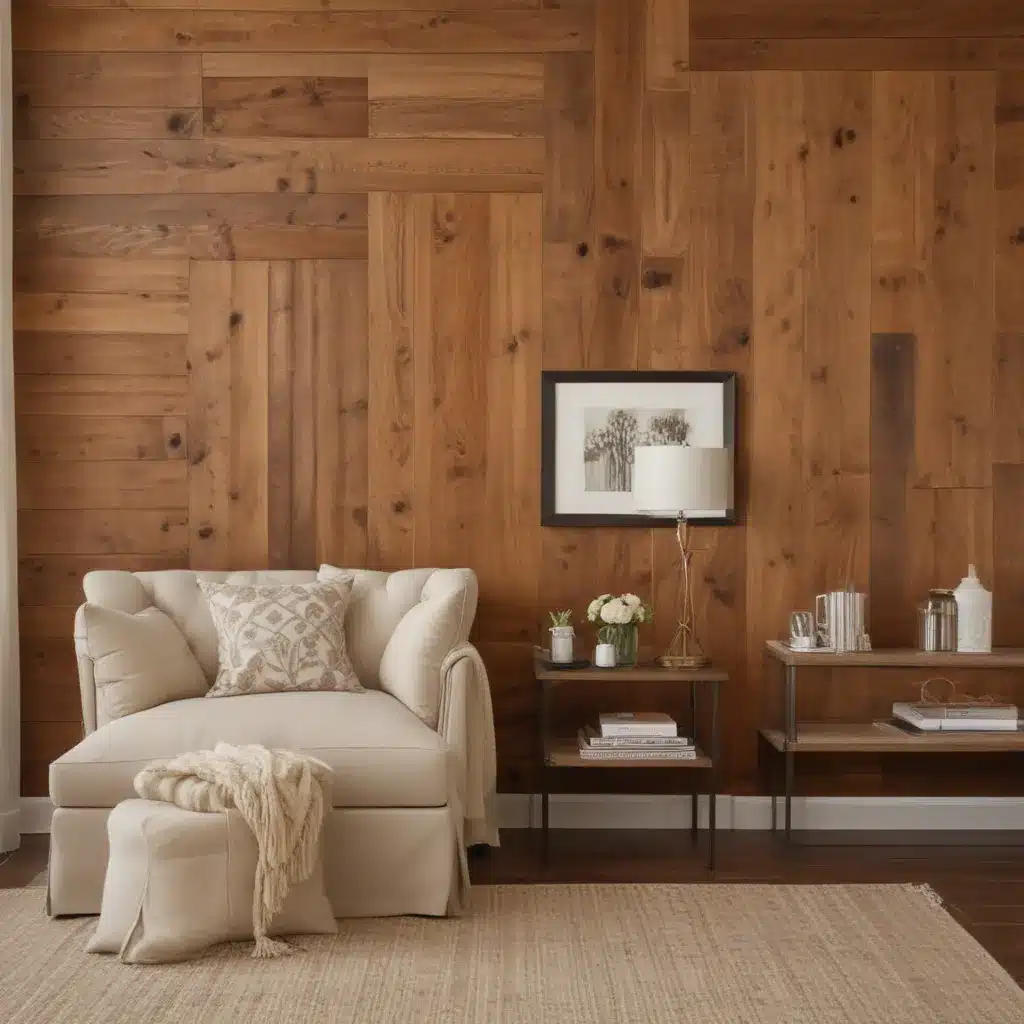
The Charm of Chunky Wood
I’ll never forget the day I walked into my friend Melissa’s kitchen and was instantly captivated by the chunky, wooden paneling lining the walls. It was like stepping back in time, a charming architectural detail that radiated warmth and character. As I ran my fingers along the grooves, I could practically feel the history seeping through.
Melissa, being the design aficionado that she is, explained that the panels were a style known as “shiplap” – long, wooden planks with a unique tongue-and-groove construction that fit snugly together. Apparently, it’s a design element that’s been making a major comeback, and for good reason. The rustic, yet refined look of shiplap has a way of instantly elevating a space, adding depth, texture, and an undeniable coziness.
As Melissa walked me through the rest of her home, I was captivated by the way the wood paneling seamlessly blended with the airy, white walls, creating a warm and inviting atmosphere. It made me wonder why I had never considered incorporating this stunning architectural detail into my own home renovation project.
Mastering the Art of Wood Paneling
Intrigued, I dove deeper into the world of wood paneling, eager to uncover its design secrets. What I discovered was a versatile technique that can transform any space, from the cozy confines of a basement to the sun-drenched expanse of a sun room.
One of the key benefits of wood paneling, as designer Emily Henderson points out, is its ability to add warmth and coziness to a room, particularly in spaces that lack natural light. By covering the walls in a rich, wooden texture, you can instantly transform a cold, uninviting basement into a cozy retreat.
But the magic of wood paneling doesn’t stop there. As blogger Anne Bogel wisely observes, the natural warmth of wood can also balance out the coolness of all-white walls, creating a harmonious and inviting space. In her own home, she’s discovered that the combination of white walls and natural wood trim is a match made in design heaven, providing the perfect canvas for her eclectic décor.
Choosing the Right Wood for Your Space
Of course, mastering the art of wood paneling isn’t as simple as just slapping some boards on the wall. The type of wood you choose can have a significant impact on the overall aesthetic of the space. As design expert Kelly Anderson explains, the warmth and undertones of the wood can either enhance or clash with the wall color you’ve selected.
For example, if you have a space with cool-toned walls, like a soothing gray or a crisp white, you’ll want to choose a wood with a more neutral, almost beige-y undertone to balance out the coolness. On the other hand, if you’re aiming for a cozier, more rustic feel, you might opt for a wood with warmer tones, like pine or cedar, to create a cohesive and inviting atmosphere.
And don’t forget about the grain and texture of the wood itself. Anderson suggests that the more pronounced the grain, the more visual interest it will add to the space. So if you’re looking to create a statement-making feature wall, a wood with a bold, knotty texture might be just the ticket.
Embracing the Possibilities
As I continued to dive into the world of wood paneling, I was struck by the sheer versatility of this design element. It’s not just about creating a cozy, rustic vibe – wood paneling can also be used to add a sense of timeless elegance to a space.
Take, for example, the stunning white-washed wood paneling that adorns the walls of Melissa’s library. The clean, minimalist aesthetic is the perfect canvas for her collection of well-loved books, creating a serene and inviting atmosphere. And in her sun-drenched hallway, the natural wood grain adds a touch of warmth and character that complements the airy, white walls.
But wood paneling isn’t limited to just the walls – it can also be used to add visual interest and depth to other design elements. As Anderson points out, painting wood paneling can be a great way to create a more modern, streamlined look, while still maintaining the cozy, textural element that makes it so appealing.
Bringing Wood Paneling Home
As I stood in Melissa’s kitchen, surrounded by the warm glow of the wood paneling, I couldn’t help but imagine how I might incorporate this design element into my own home. The possibilities seemed endless – from creating a cozy, rustic retreat in the basement to adding a touch of elegance to a sun-drenched sunroom.
Of course, the prospect of tackling a wood paneling project can be a bit daunting, especially for a DIY novice like myself. But with the right planning and a bit of elbow grease, I’m confident that I can transform my bland, drywall-laden walls into a warm and inviting oasis.
And who knows, maybe one day I’ll even be the one welcoming a friend into my home, marveling at the stunning wood paneling that graces my walls. After all, as Melissa so eloquently put it, there’s just something about that “chunky, wooden paneling” that makes a space feel like a true haven.
So, if you’re ready to warm up your walls and add a touch of timeless charm to your home, why not consider the power of wood paneling? With a little creativity and the right design approach, you might just uncover a hidden gem that will breathe new life into your living space.

















